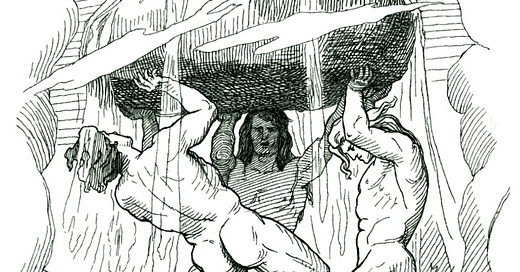Prior to Christianity’s syncretisation with pre-Christian European paganism, the concept of the trinity did not exist in the New Testament in that form, nor did it exist in the Old Testament at all. The idea of the trinity in the polytheistic spirituality of Europe was so foundational as a concept to the European people that it was adopted by the Christian religion in the form of “the father”, “the son”, and “the holy spirit”.
In other spiritual traditions across the world, the idea of a trinity or triune god is fundamental to the understanding of the universe. In the Daoist tradition, it is explained logically in the sense that, from nothing came one, from one came two (Ying and Yang), and from two came three (the three pure ones). From three came five (the five elements: Aether, Air, Fire, Water and Earth), and from five came infinity. The “three” in Daoist tradition is referred to as the “three pure ones”.
Germanic myth is no different in its mythological understanding of triune deities. Óðinn, Villi and Vé do battle against Ymir - the representation of undifferentiated matter of the universe who is also male and female. To use the Daoist formula: from nothing came one, representing Ymir and the melting ice in Ginnungagap (Yawning Void) producing the two, representing his feet rubbing together and sweat dripping from his body to create more Jǫtnarr (Devourers) and from whence comes the three involving Búri, Borr and Bestla as well as Óðinn, Villi and Vé. With Ymir’s corpse, the Gods tear it apart, using his hair to create trees, his bones for mountains and boulders, his teeth for rocks and stones, his blood for the ocean, his eyelashes as the yard around earth and his skull for the dome that sits over us.
The Importance of Óðinn, Villi and Vé
Keep reading with a 7-day free trial
Subscribe to Heryos Chad to keep reading this post and get 7 days of free access to the full post archives.




